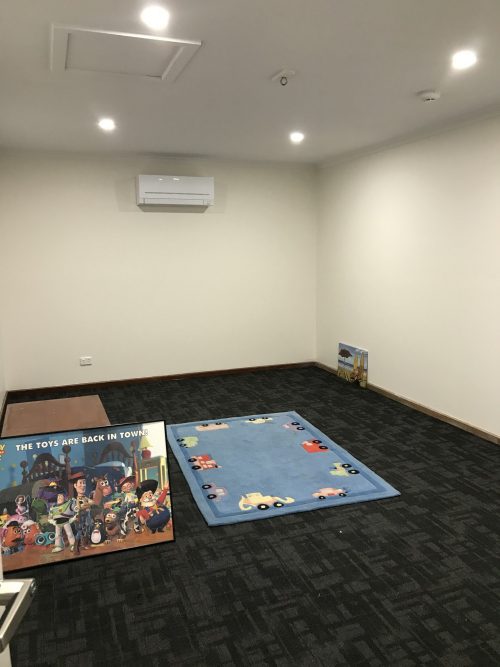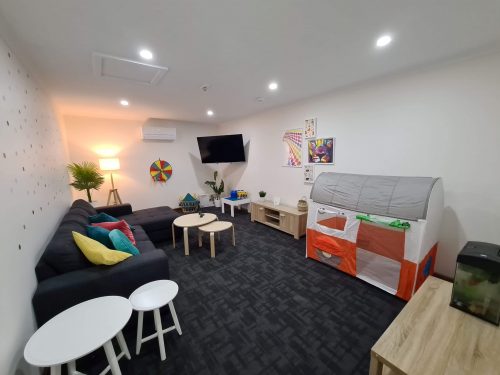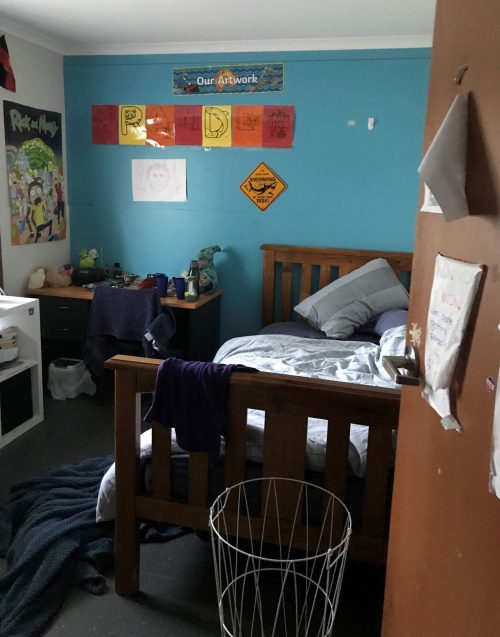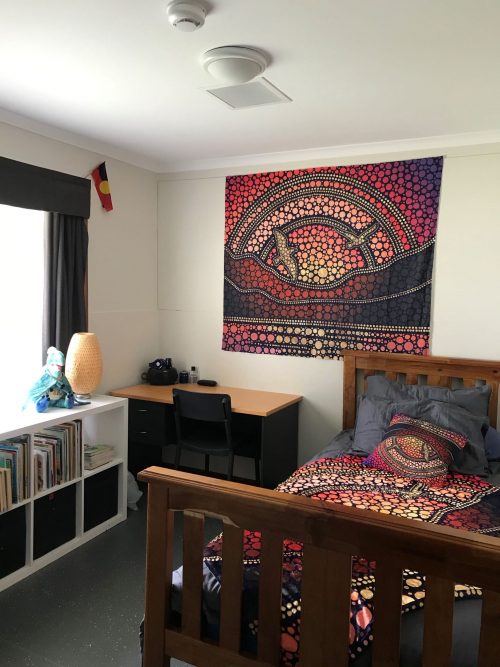DCP is currently rolling out a program to ‘make over’ the bedrooms and shared living areas of children and young people in residential care to make them more ‘homelike’. This is a very welcome initiative, with DCP announcing, as part of their MyPlace program, all DCP residential care properties will be transformed, to make them more therapeutic, culturally supportive and responsive to residents’ needs.
The MyPlace program is working with each child and young person directly to help design and create the overall feel of their house and their own bedrooms, so the rooms reflect their personalities and meet their individual needs.
Young people have consistently told us that a ‘homelike’ environment is a key aspect of feeling safe in residential care. By contrast, the institutional look and feel of many residential care facilities was a common theme in the Guardian’s Final Report of the trial Child and Young Person’s Visiting Program, published earlier this year. The report recommended that facilities should be more homelike and personalised and young people should have input into the process and design of the place in which they live.
Having a space where a child or young person can go to and feel a sense of comfort and ownership – not only because they helped create it but also because it reflects who they are as a person – helps promote their feelings of security and wellbeing.
MyPlace is an excellent initiative, which sees the child or young person involved in the whole process, from helping to prepare an image board so they can gain a visual perspective about how their personal space and shared rooms will look, to contributing to design, creation and installation, including unpacking and assembling flat-pack furniture and placing soft furnishings and items in their room. DCP has advised us that specialised staff also work with the team to ensure the fit-outs meet the needs of children and young people who are Aboriginal or from diverse cultural backgrounds or who have disabilities.
So far, feedback from the young people has been very positive. DCP shared some examples with us from a recently refurbished three-bedroom home in the southern suburbs.


A 12-year-old boy said he would like his bedroom to represent his Aboriginal background. Cultural items were sourced and he chose the final design. A current family photo was arranged for both his bedroom wall and family room wall, creating a home-like feel and connection to family and culture. His reaction was, “This is awesome.”


An 11-year-old explained she was fond of beluga whales. She was involved in deciding the colours and layout of her room as well as textures and the overall theme. A built-in wardrobe was installed to create more space and storage, and other items like a beluga whale quilt cover, throw blanket, pillows, wall hanging, fairy lights, bean bag, rug, lamp, mirror and collage picture frame all complemented the overall look. Her reaction? “Wow, I absolutely love it, it looks amazing.”
We understand that residential care staff have reported that since being part of the program they have noticed a real change in the dynamics of the houses with many children and young people showing an increased sense of social responsibility and choosing to find enjoyment in more communal spaces.
This process of allowing children and young people to express their unique identities, have more influence over the environment they live in and feel acknowledged and heard, can only benefit their development and sense of safety. It is this understanding that also informs the Australian Childhood Foundation’s Practice Guide: ‘Creating positive social climates and home-like environments in therapeutic care’.
We will be watching with great interest as this program continues to be rolled out to the remaining DCP residential care properties and look forward to hearing more stories of how being directly involved in the creation of attractive and personalised living spaces contributes to children and young people’s wellbeing.
